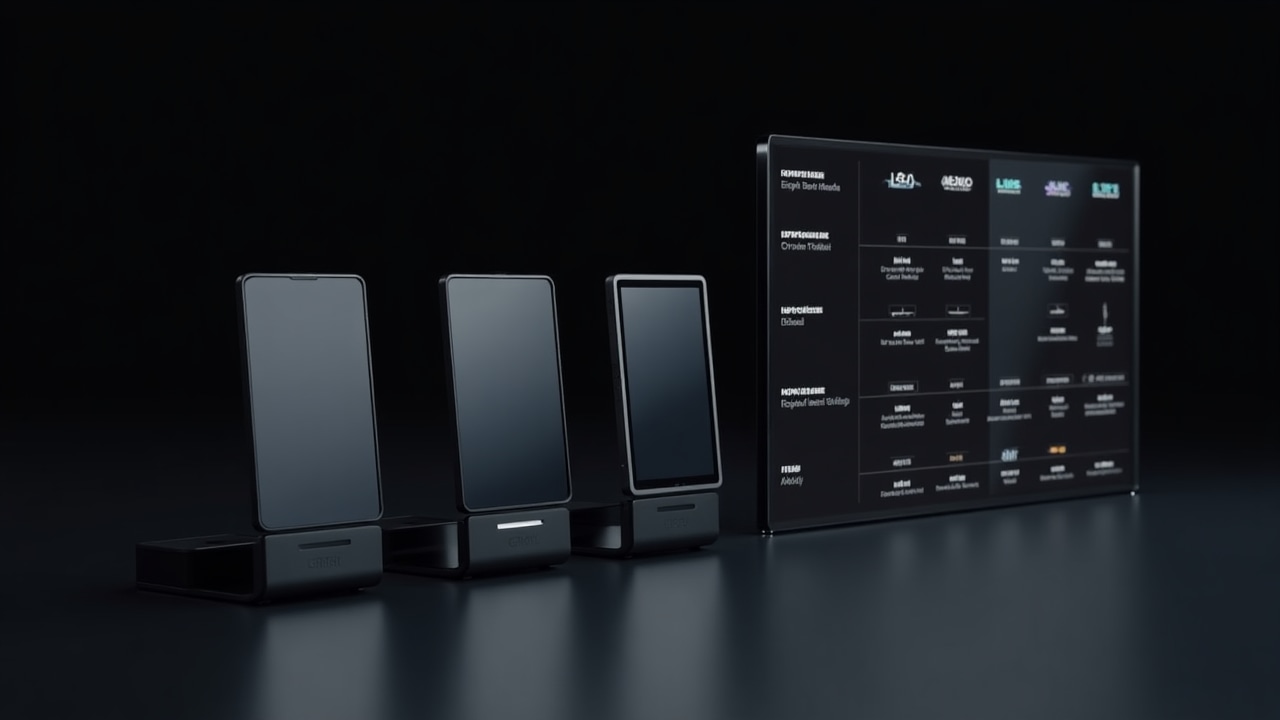A comprehensive guide to help you select the ideal hardware wallet based on your specific cryptocurrency needs, security requirements, and usage patterns.

Before diving into the selection process, it's important to understand why hardware wallets represent the gold standard for cryptocurrency security. Hardware wallets are specialized devices designed with a single purpose: to securely store the private keys that control your cryptocurrency while keeping them isolated from internet-connected devices.
Unlike software wallets or exchange accounts, hardware wallets:
For anyone holding cryptocurrency beyond trivial amounts, a hardware wallet is not a luxury but a necessity. The question then becomes not whether to use a hardware wallet, but which one is right for your specific needs.
One of the first considerations should be whether the wallet supports the cryptocurrencies you own or plan to own. While most hardware wallets support major cryptocurrencies like Bitcoin and Ethereum, support for altcoins and tokens varies significantly between devices.
SafeVault offers varying levels of cryptocurrency support across our product line:
When evaluating cryptocurrency support, consider not just what you hold now, but what you might invest in later. A wallet with broader support offers more flexibility as your portfolio diversifies.
While all hardware wallets provide significantly better security than software alternatives, there are important differences in their security implementations:
SafeVault devices prioritize security with features like tamper-resistant hardware, secure boot verification, and PIN protection with device wiping after multiple failed attempts. Our Enterprise model offers advanced multi-signature capabilities for organizations and high-net-worth individuals.
Security shouldn't come at the expense of usability. Consider these aspects of the user experience:
SafeVault Pro X and Enterprise models feature full-color touchscreen displays for intuitive operation, while our Lite and Mini models use simpler interfaces that prioritize reliability and cost-effectiveness.
Hardware wallets connect to computers or smartphones in different ways, each with trade-offs between convenience and security:
SafeVault Pro X offers both USB-C and Bluetooth connectivity for maximum flexibility, while our Enterprise model adds Wi-Fi capabilities for certain administrative functions. The Lite and Mini models focus on reliable USB connectivity.
All quality hardware wallets generate a recovery seed phrase (typically 12-24 words) during setup. This seed allows you to recover your cryptocurrency if your device is lost, stolen, or damaged. Consider:
All SafeVault devices use the industry-standard BIP39 seed phrase system, ensuring compatibility with other wallets and recovery solutions. Our Secure Bundle includes both a hardware wallet and a steel backup solution for comprehensive protection.
Since a hardware wallet may store significant value for many years, physical durability matters:
SafeVault devices are built with high-quality components and undergo rigorous durability testing. Our Pro X and Enterprise models feature premium materials and construction, while our Mini model includes water-resistant casing for on-the-go protection.
Consider the reputation and track record of the company producing the hardware wallet:
While your cryptocurrency remains accessible through your recovery seed even if the company disappears, ongoing firmware updates and support enhance security and add features over time.
Hardware wallets range from basic models around $50 to premium devices exceeding $300. Consider the value proposition rather than just the price:
SafeVault offers a range of devices at different price points, from the entry-level Mini ($59.99) to the enterprise-grade Enterprise model ($299.99), ensuring there's an appropriate solution regardless of your budget or security needs.
If you're new to cryptocurrency with modest holdings:
If you actively trade across multiple cryptocurrencies:
If you're primarily holding for the long term:
If you're managing cryptocurrency for an organization:
When you've narrowed down your options based on the factors above, consider these final steps:
Choosing the right hardware wallet is an important decision that impacts the security of your digital assets. By considering the factors outlined in this guide and matching them to your specific needs, you can select a device that provides the appropriate balance of security, usability, and features.
Remember that the best hardware wallet is one that you'll actually use consistently. Even the most secure device won't protect your cryptocurrency if it's too complicated or inconvenient to use for your regular transactions.
SafeVault Devices offers a range of hardware wallets designed to meet different needs and budgets, from the comprehensive SafeVault Pro X to the portable SafeVault Mini. Explore our product lineup to find the perfect match for your cryptocurrency security needs.
| Feature | Beginner | Advanced |
|---|---|---|
| Model | Lite/Mini | Pro X/Enterprise |
| Cryptocurrencies | 100-500+ | 1,500+ |
| Display | OLED/LED | Color Touchscreen |
| Connectivity | USB | USB, Bluetooth, Wi-Fi |
| Multi-sig | No | Yes |
| Price Range | $59-$79 | $149-$299 |
SafeVault Pro X - Advanced features with broad cryptocurrency support.
View Details